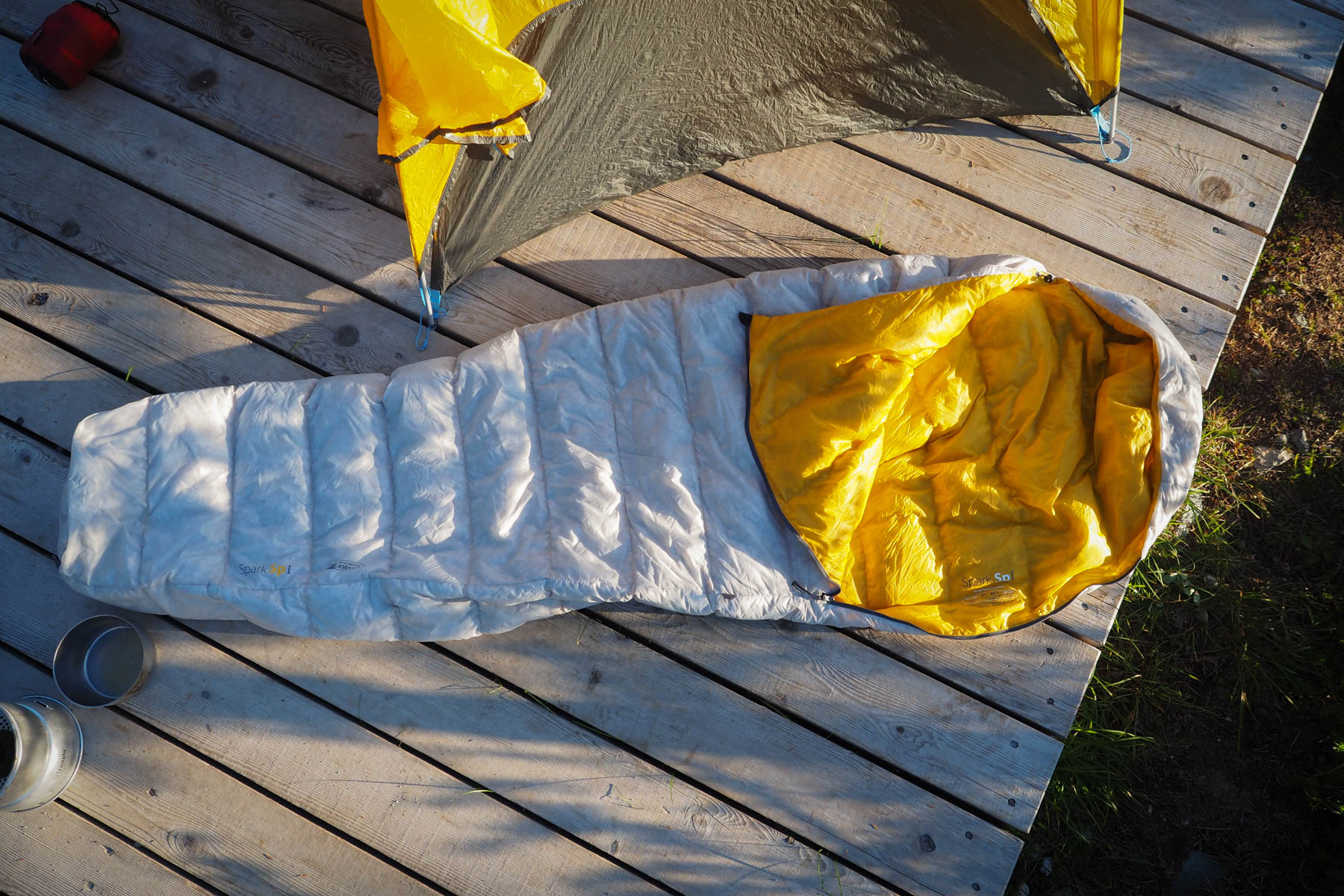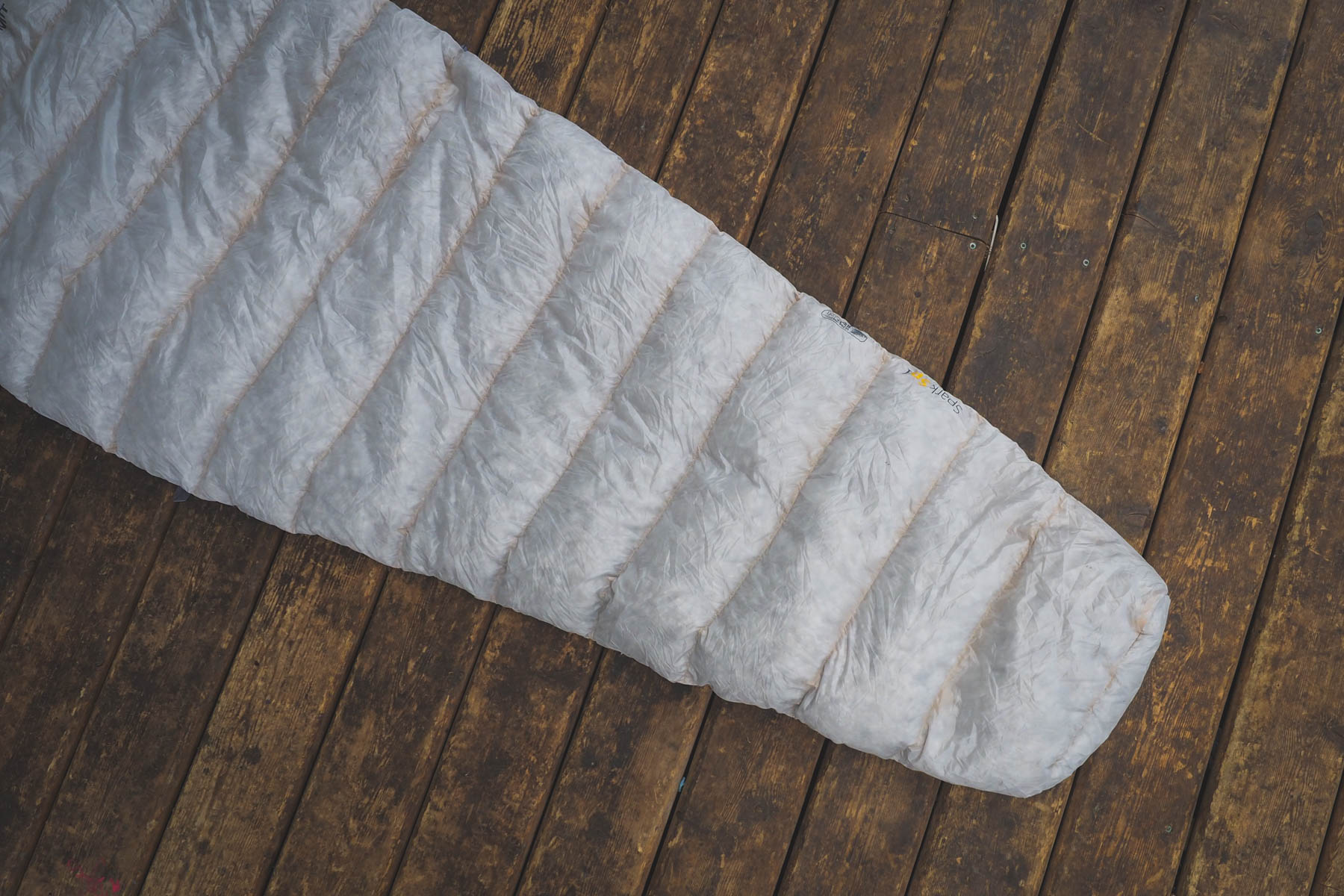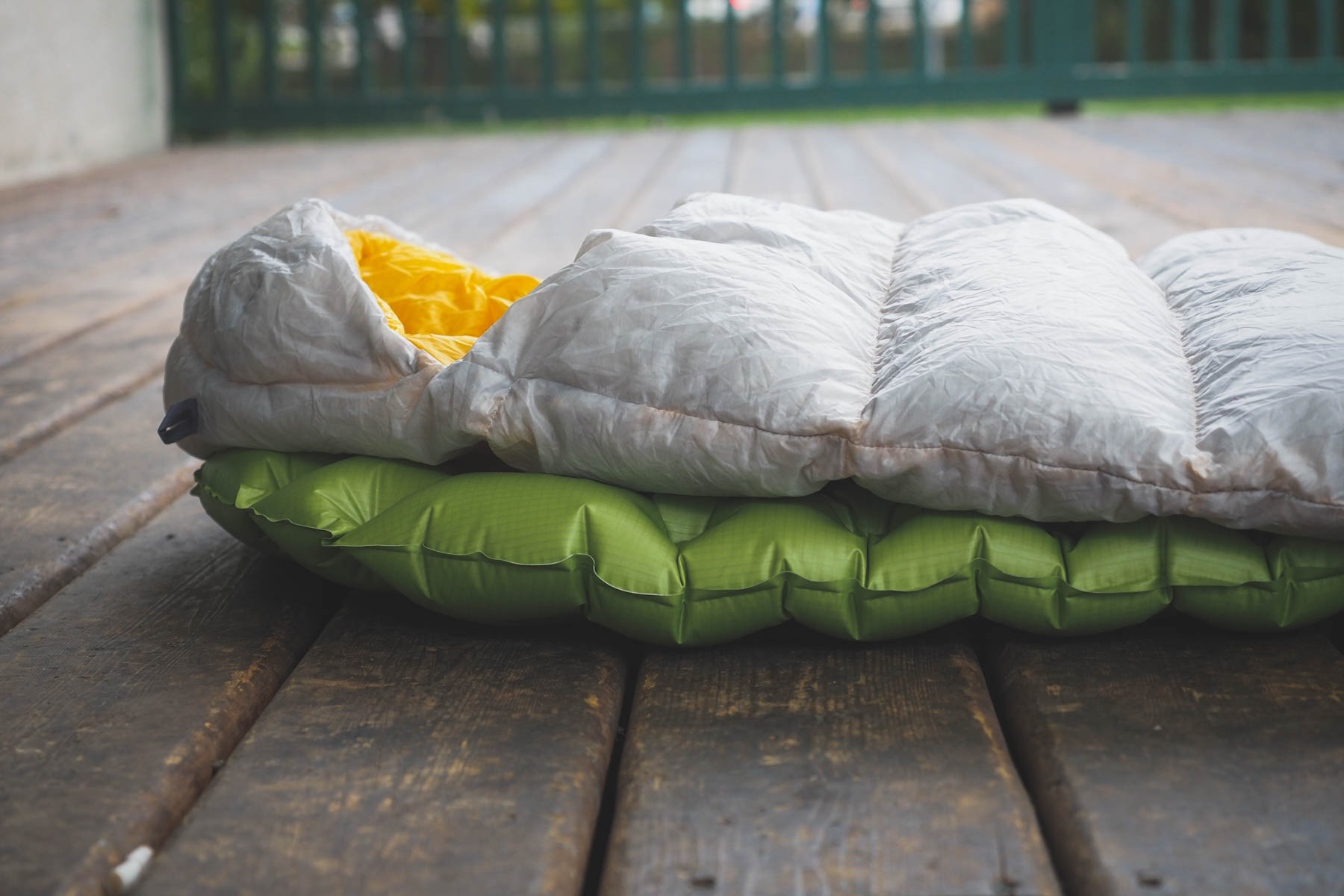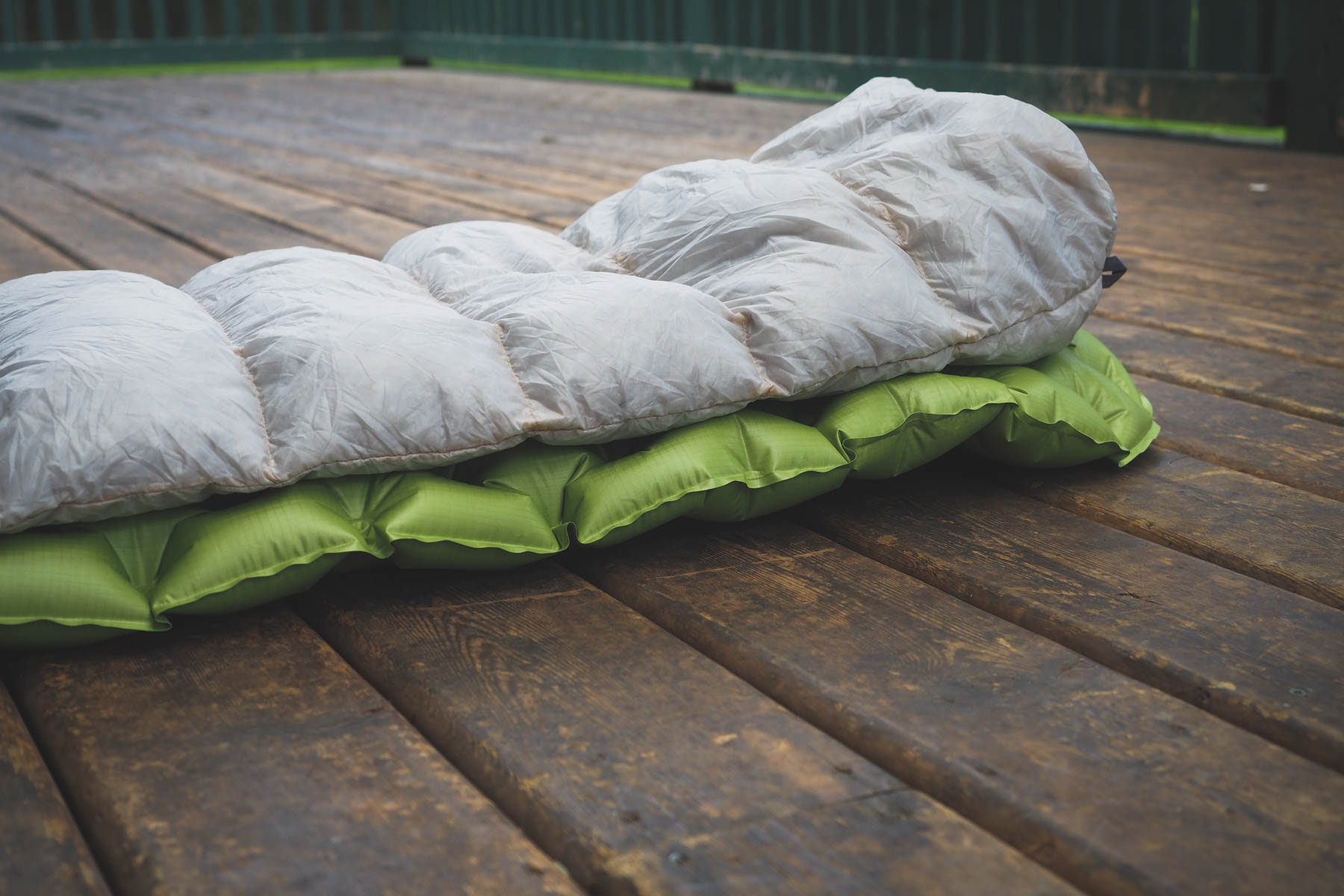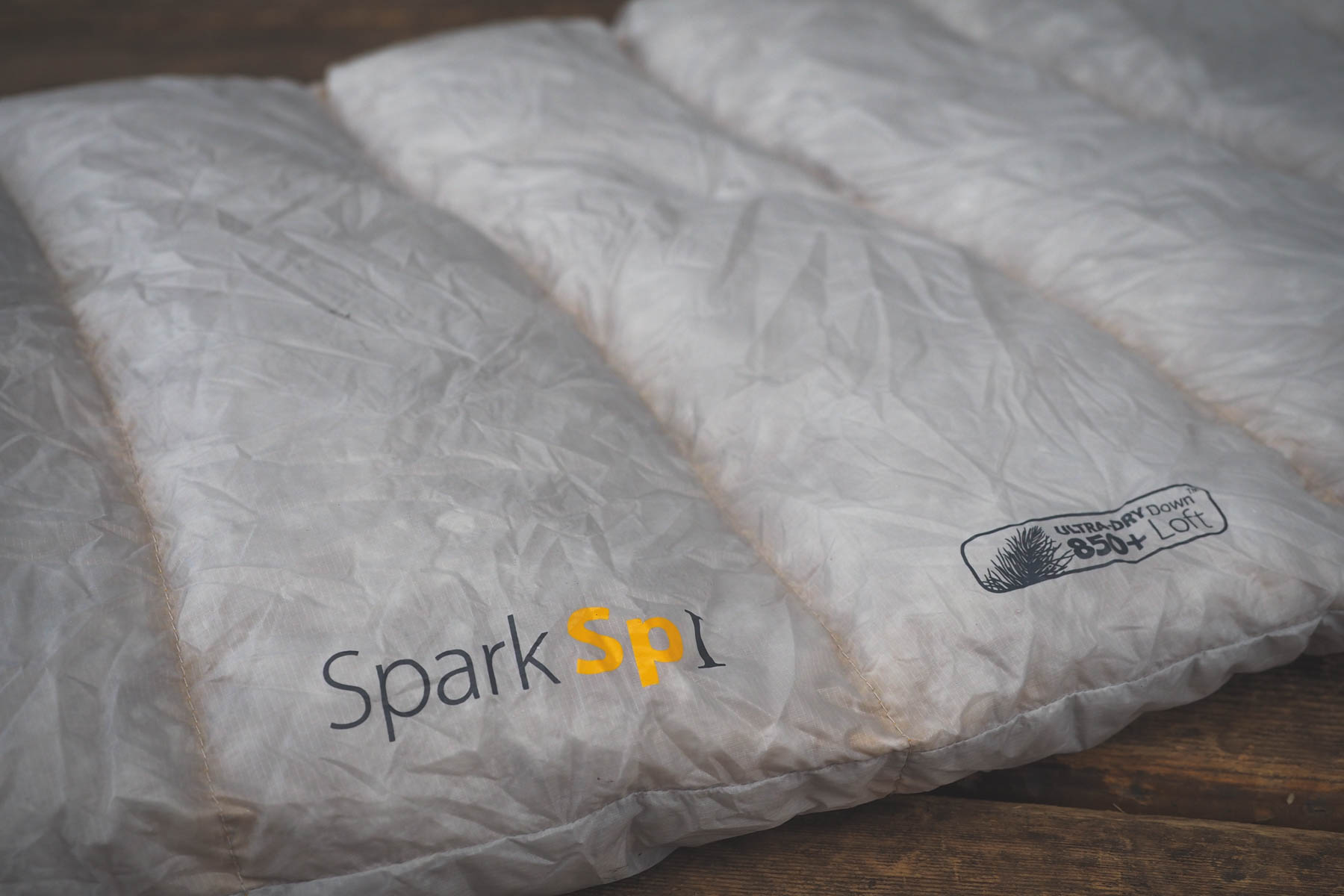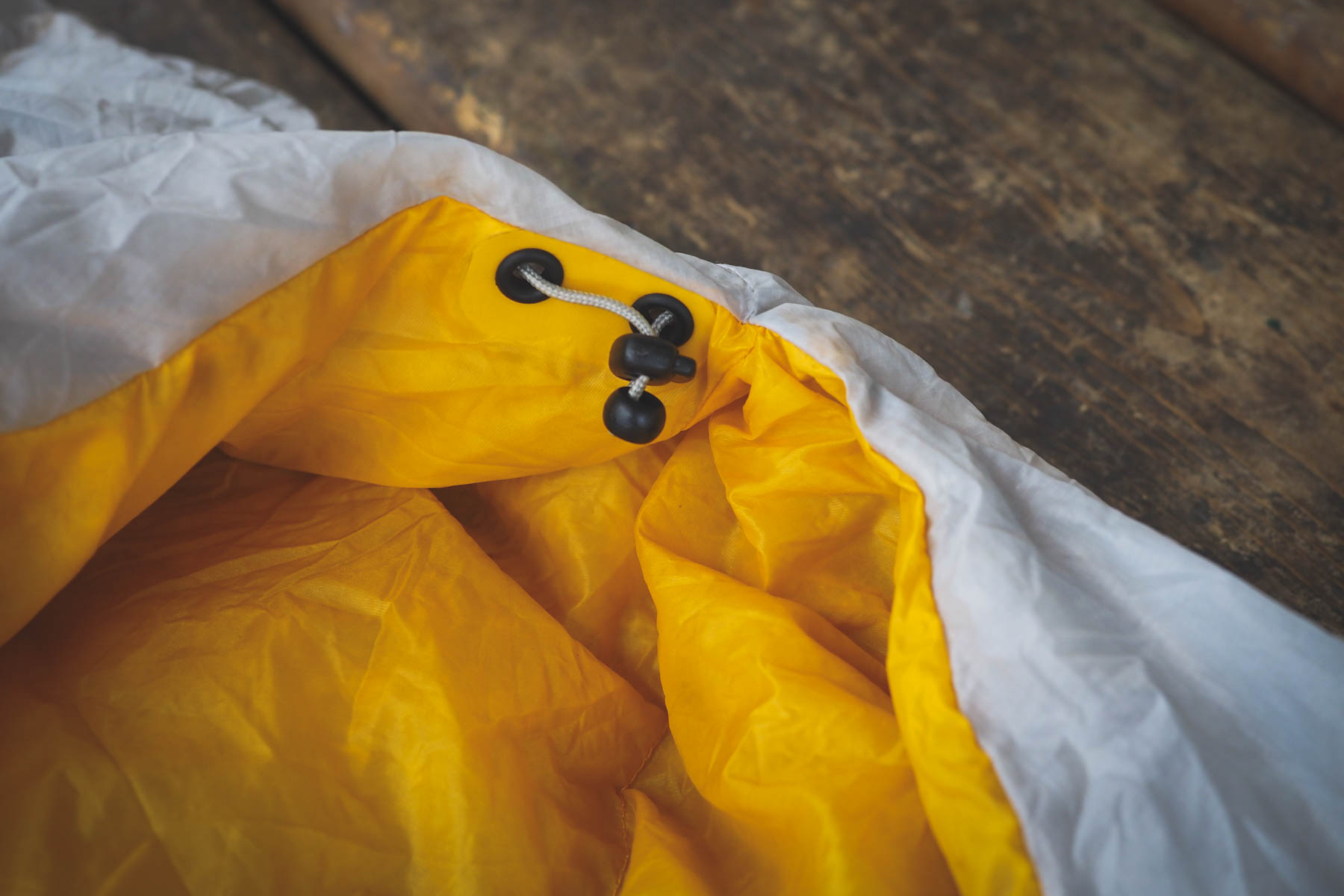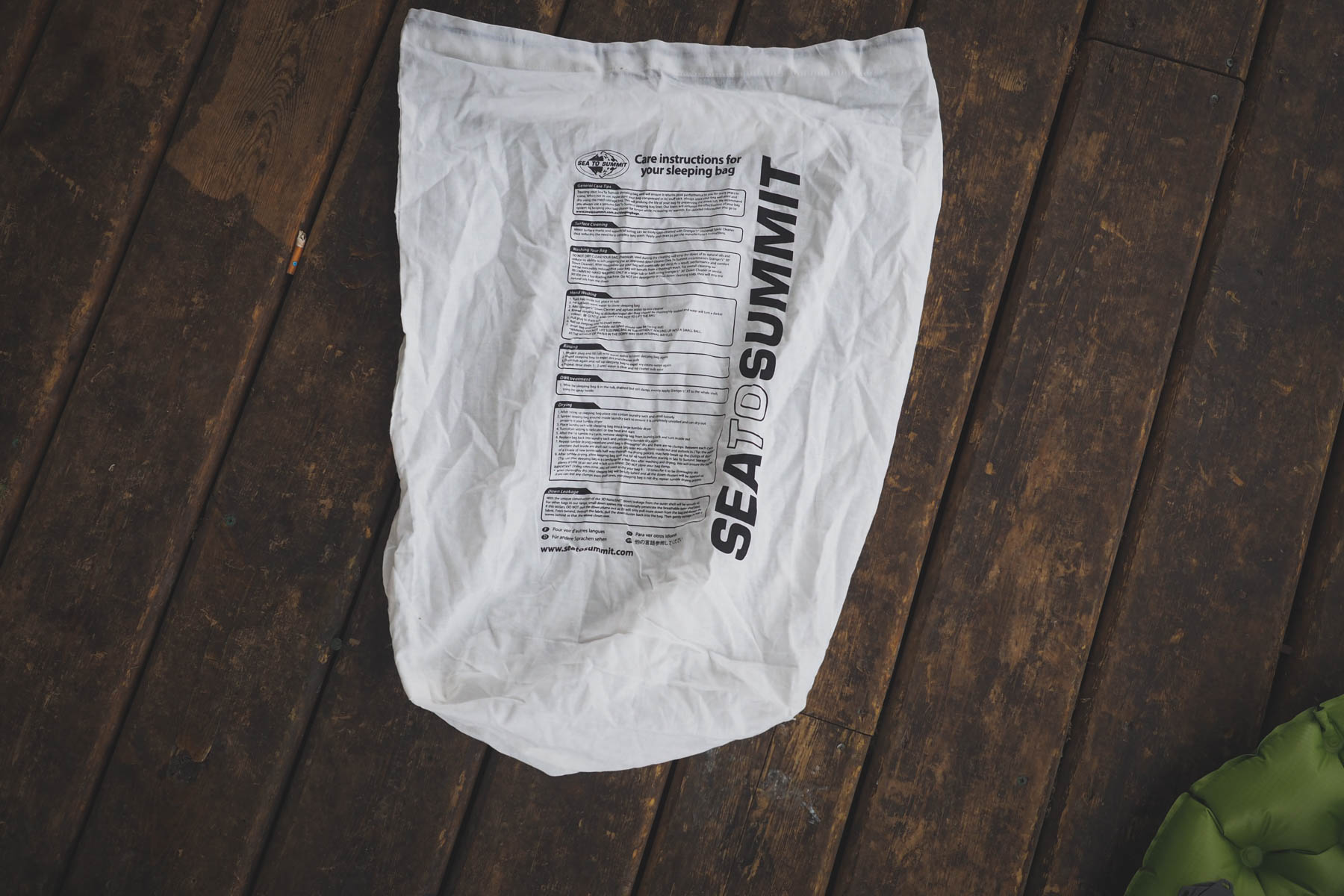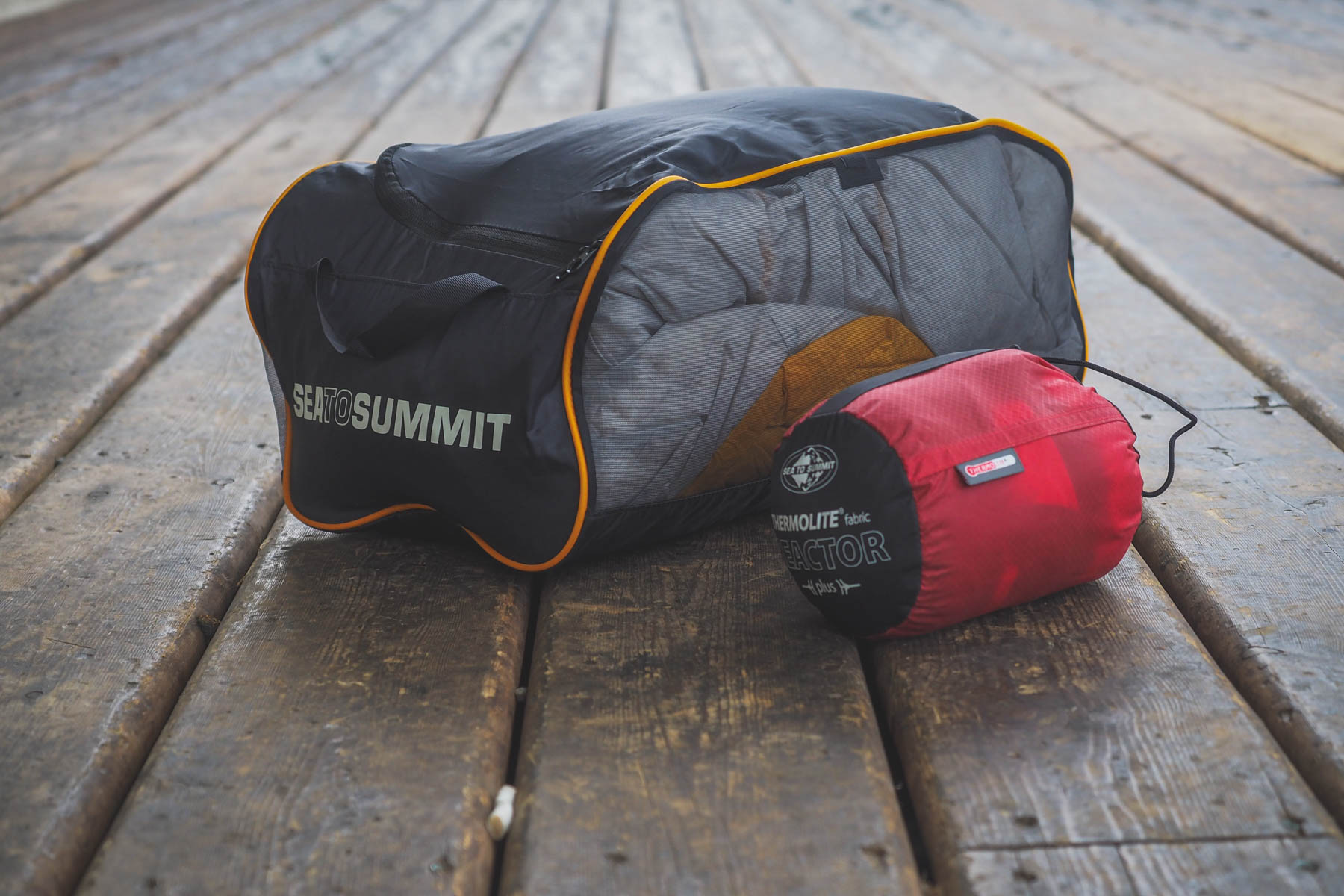Sea To Summit Spark SP I Review: Light as a Feather
The Sea To Summit Spark Sp I sleeping bag is light enough that it might just weigh less than your favourite down jacket. It also packs down smaller than most bags we’ve used and can still keep you comfortable through the summer and into the shoulder seasons. Here’s how it fared after a season and a half of use…
I’m fairly certain we have mentioned this on several occasions, but it’s always worth repeating for those just joining in on the fun. Out of all the gear in a bikepacking kit, your sleep system, which encompasses your shelter, sleeping pad, and sleeping bag, is often the heaviest and bulkiest. And superlight silnylon and cuben fiber isn’t always in the budget for the average rider. However, if you are not opposed to being engulfed in feathers and are looking to shed some serious weight off your sleeping kit, the Sea To Summit Spark Sp I sleeping bag weighs a measly 348g and packs down so small you could almost convince your bikepacking buddies that you are going without a sleeping bag at all.

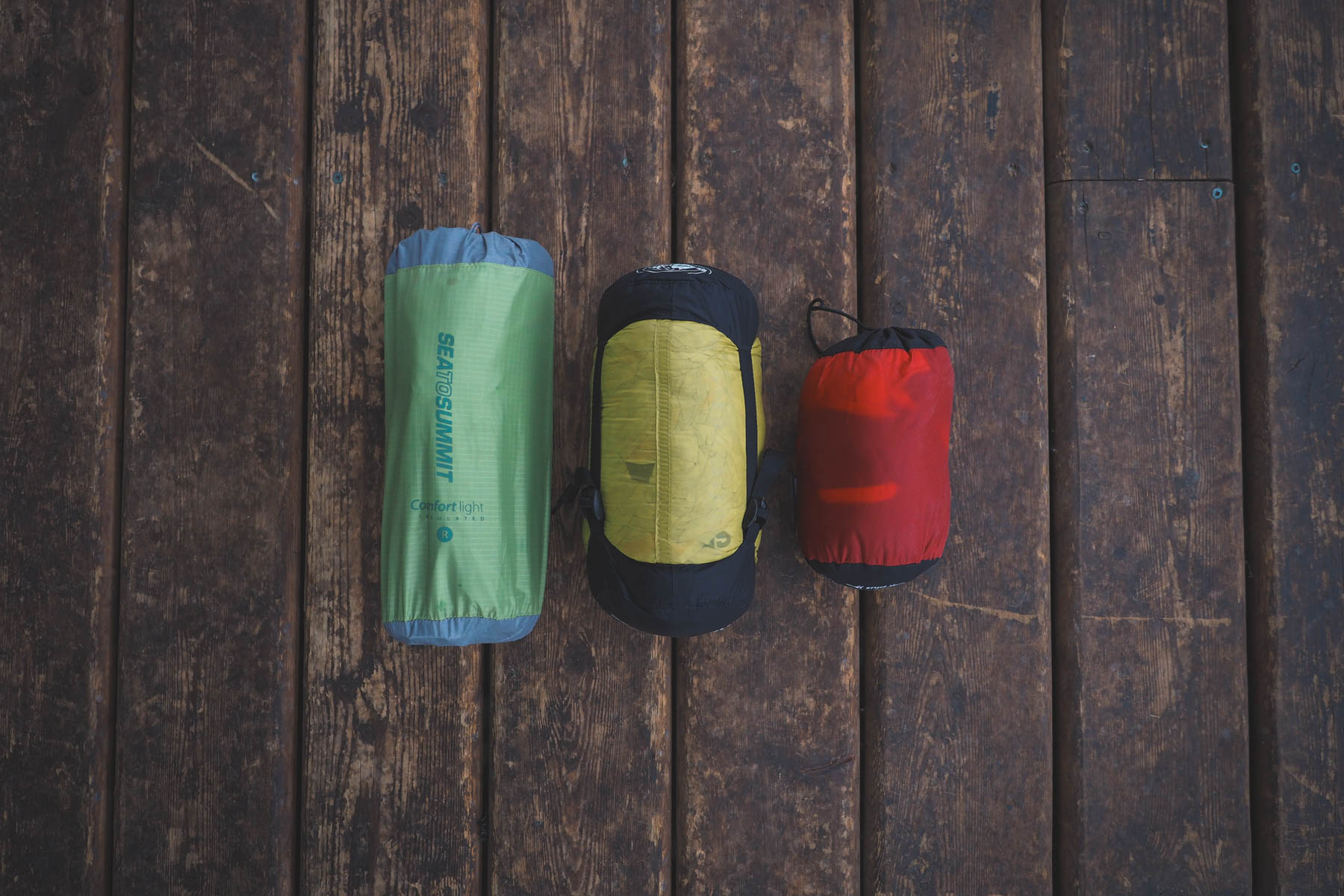
Sea To Summit offers three variations in the Spark series. Each utilizes their ULTRA-DRYDown 850+ loft goose down and are all targeted towards cycling touring, ultra-light hiking, adventure racing… and bikepacking. Starting with the warmest and heaviest, the Sp III has a fill weight of 400g and a comfort rating of 25F (-4C). The Sp II has a fill weight of 280g and a comfort rating of 35F (2C). The version tested, the Spark Sp I, is the lightest, and most packable with a fill weight of a mere 180g and a claimed comfort rating of 46F (8C). These specs are pulled directly from Sea To Summit, and are specific to a regular length bag, so expect to add around 20g of fill weight for the long length bags if you are taller than 6’.
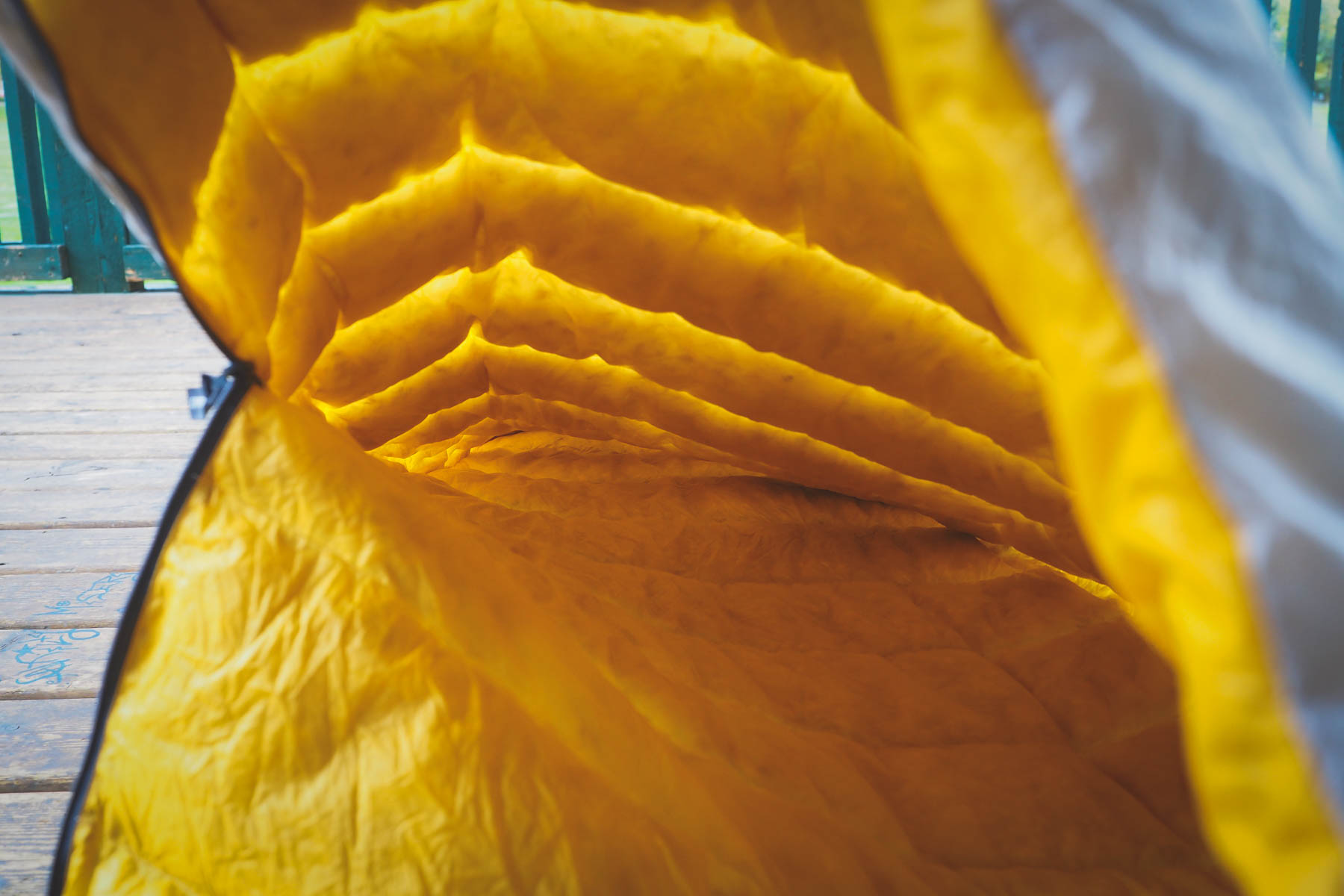
Each bag in the series is constructed with a lightweight 15D nylon inner fabric and an ultralight 10D nylon outer fabric treated with a Durable Water Repellent finish. There is also a slight variation in the baffle design between each model, which corresponds with the temperature ratings and overall weight of the bags. The Sp III uses a box wall baffle throughout the entire bag — meaning it has a strip of fabric that runs perpendicular to the inner and outer shells — which is known to be a simple and lightweight option for keeping the insulation where it should be. The Sp II uses the same box wall baffles over the torso, but sewn through lateral baffles over the legs to keep things light. Finally, the Sp I uses an entirely sewn through lateral baffle design for the best weight / bulk / warmth ratio. The Sp III is the only bag in the series that offers an internal draft tube… but we’re looking to shed weight aren’t we? Who needs draft tubes?
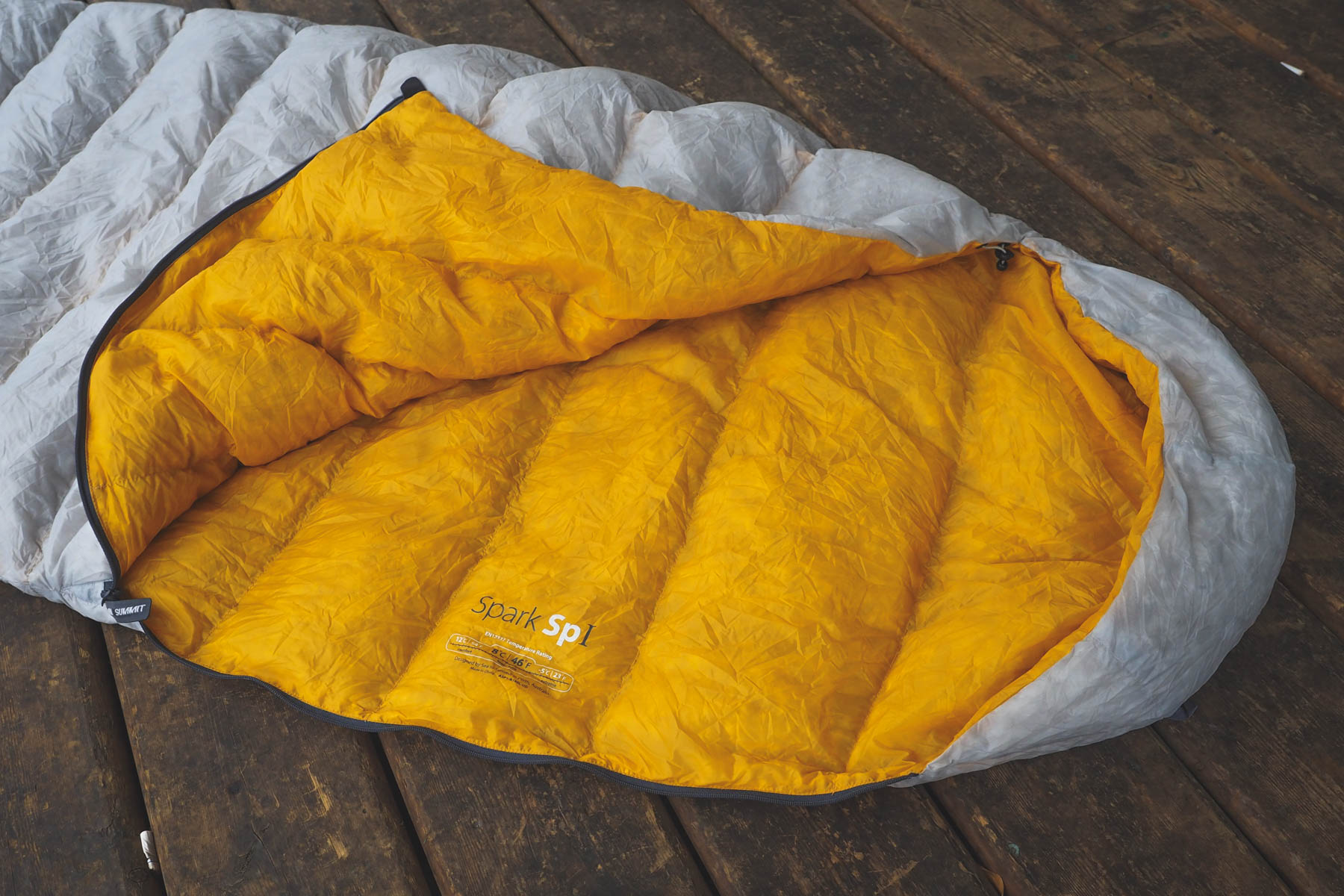
I opted for the lightest of the Spark series sleeping bags, the Sp I, simply becuase it is lighter than the other two models… and at the time it was spring in British Columbia. During a handful of overnighters and my longer ride along the BC TRAIL, nighttime temperatures fell between 41°F – 50°F (5°C – 10°C) and with some light merino long johns, merino top, and a light toque I was extremely comfortable throughout the entire night.
I continued to use the Spark Sp I into the fall and in some sub alpine terrain along British Columbia’s west coast, where the nighttime temperatures were closer to 27°F (-3°C). This was definitely the extreme limit for the bag; there simply isn’t enough insulation to trap what limited heat my body was producing in those conditions. During these colder nights I would wear the same merino top and bottom, but add in Sea To Summit’s Thermolite Reactor Compact Plus Liner for a bit extra warmth. I agree with Sea To Summit’s 46°F (8°C) comfort rating for the Spark Sp I, making it ideal for most summer riding conditions and a bit of fall camping as well if maintaining a light setup is crucial. The Sp I foregoes some of the usual heat trapping features like a draft tube behind the zipper, as well as the neck baffle which are tell tale signs that this is a true summer bag. There is a small elastic cinch in the hood of the sleeping bag to help mitigate heat loss from around the head, but I often found keeping it slightly open and adding in a wool toque on chillier nights was the most comfortable.
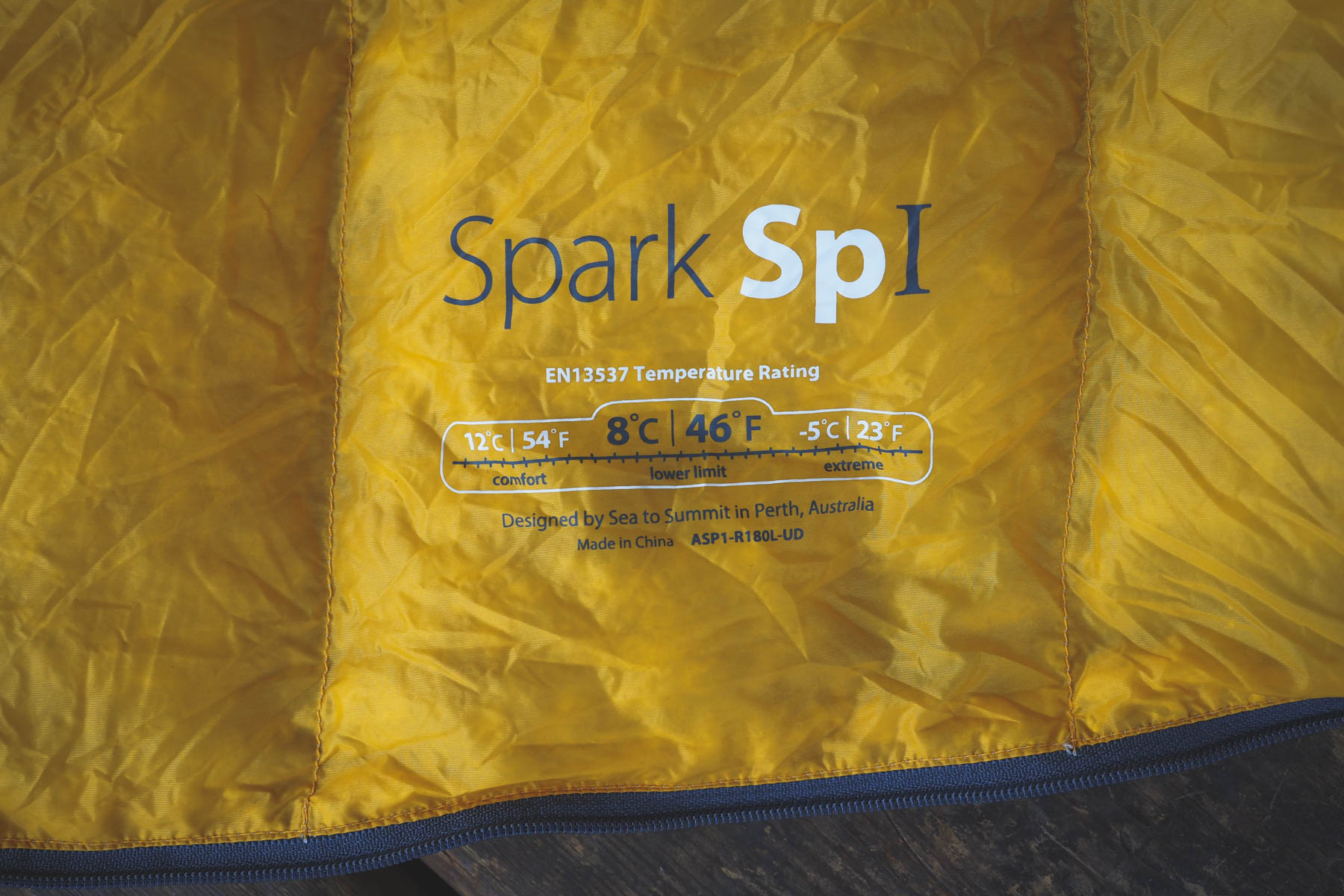
Sea To Summit’s Ultra Dry Down™ is treated with a permanent water repellency, according to Sea to Summit “down at the nano-level” (to treat every last bit of down). This creates an insulation designed to repel moisture, retain loft, and offer anti-microbial properties. Because down insulation is so vulnerable to moisture, treated down should be especially attractive to anyone who might sleep under the stars, bikepack in a damp or humid environment, or expect to encounter unfavorable conditions. In short, treated down continues to keep you warm when traditional, untreated down will not.
If you’re a skeptic, like myself, you might be rolling your eyes at some of the lingo used in many of these manufacturing processes. However, it’s worth noting that there are a few other big brands out there claiming similar types of water repellant down technology. As far as the quality of the down and it’s sourcing, Sea to Summit makes even more claims, but they back this with a certificate. Each bag includes a International Down Feather Laboratory (IDFL) inspection certificate that identifies the exact down fill power used, as well as an Responsible Down Standard (RDS) certification. The latter guarantees humane treatment of the waterfowl whose down and feathers are used in the bag’s insulation. As far as the quality of the down, according to the certificate, the fill power rating was in fact much higher than the claimed 850+ used in the branding. In addition, I can definitely vouch for the antimicrobial and antibacterial properties of the treated down. After 20+ nights of use my bag is still oddly fresh smelling… pretty impressive considering the amount of funk generated while out bikepacking. If the odors do ever decide to impede the bag’s ability to shed off the stank, check out Sea To Summit’s guide on properly washing your down bag. A cotton bag for drying is also included with the Spark, well as a mesh storage cube to air it out during regular storage.
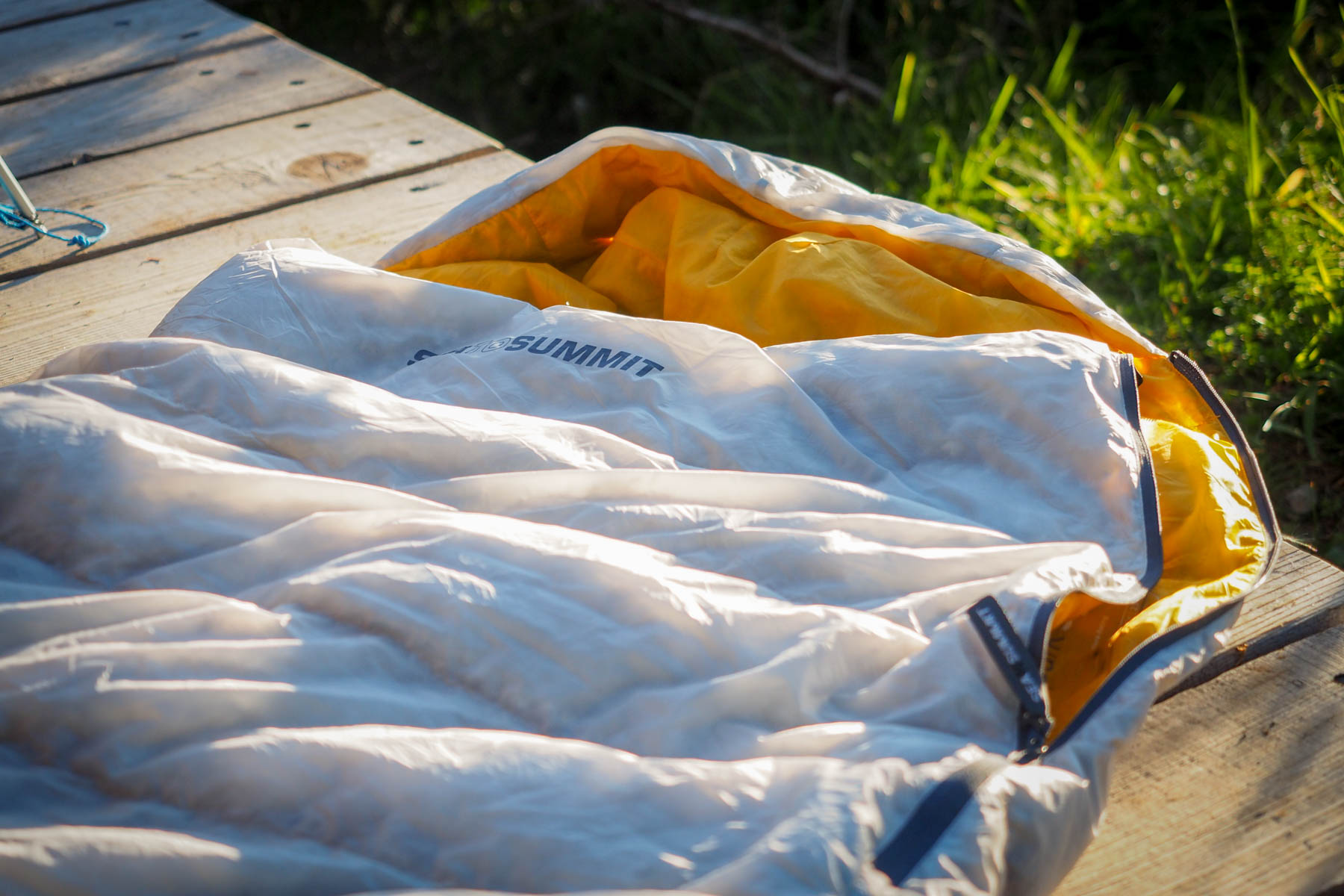
Comfort wise, the Spark series bags are all designed around minimalist sensibilities, something I was quick to notice this the first time I used it. The bag is extremely tapered in comparison to other bags I’ve used, and it took some getting used to. The widest portion, at the shoulders, measures 26 inches across, narrowing down to 12 inches down towards the footbox. I’ve found this design to only really work while sleeping on my back, due to its sleek stature. However, on warmer nights when I could unzip the ⅓ opening, I found it gave a bit more room to toy with the idea of sleeping on my side. Or some may find it comfortable to change positions with the bag, instead of moving around inside of it.

Pros
- Packs down very small and weighs very little.
- High quality down and the included IFDL certificate to prove it; a thoughtful inclusion.
- Anti-microbial / bacterial properties make this bag a good choice for longer tours and greater distances.
- Three Spark models to choose from depending on where and when you are heading out.
- Ethically sourced down that you can feel good about using.
Cons
- Not quite warm enough for some of the chillier nights in the shoulder seasons.
- Potential for cold spots due to the lightly insulated baffles.
- No draft tube or collar.
- Very tapered bag may take some getting used to, especially for side sleepers.
- Footbox isn’t the biggest we’ve seen and could do with some extra insulation.
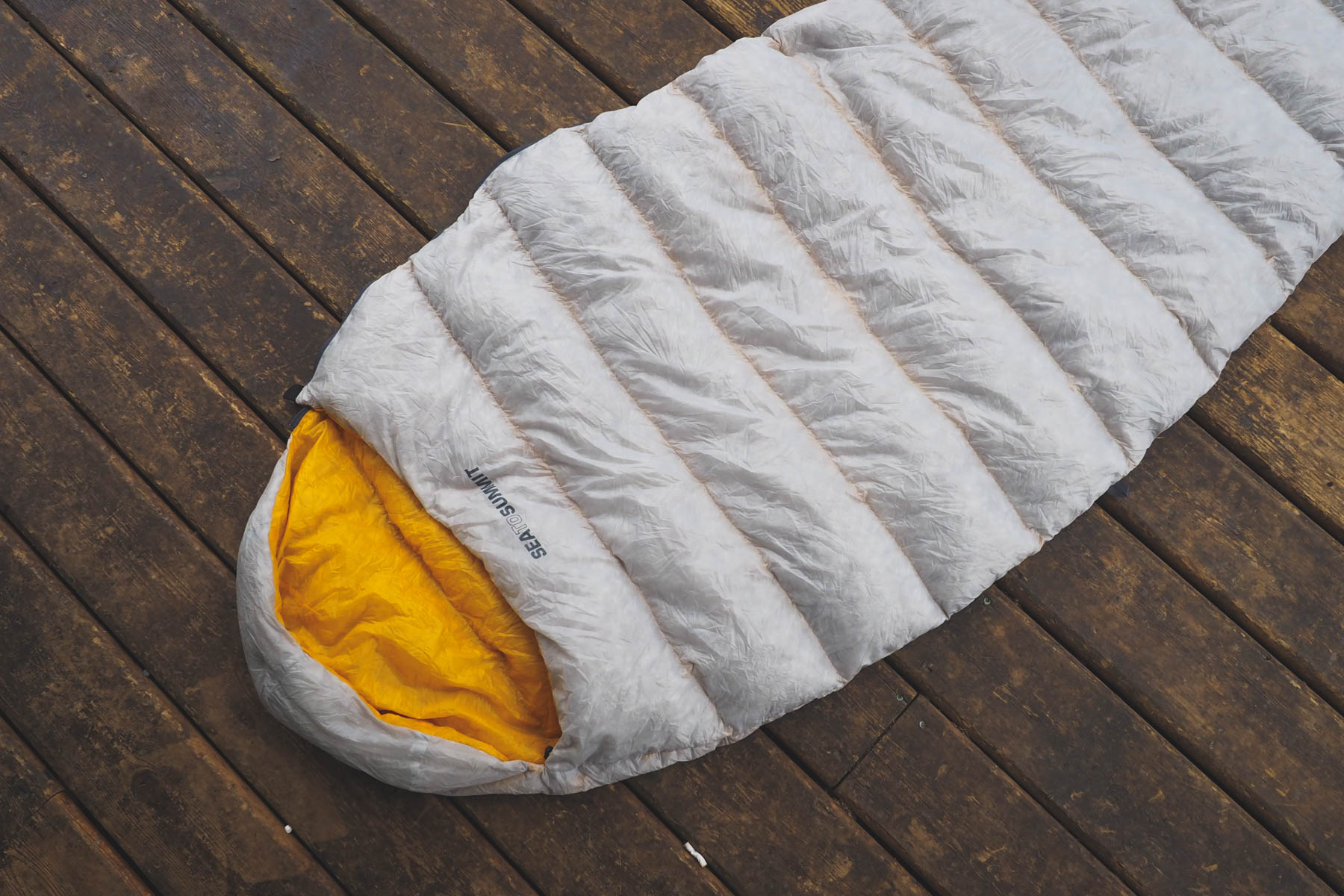
- Size tested Regular
- Weight 348g (12.3 oz)
- Price $299
- Place of manufacture China
- Contact SeaToSummit.com
Buy at your local camp store, or check prices at REI (Spark SPI (rated to 46°F/8°C) / Spark SPII (rated to 35°F/2°C)). Or Amazon (Spark SPI / Spark SPII / Spark SP III (rated to 25°F/-4°C)).
Wrap Up
If you’ve laid out your gear on the floor before, you’ve probably noticed that your sleeping bag, sleeping pad, and tent take up a healthy portion of that ensemble. The warmth of summer doesn’t always call for a bulky and heavily insulated sleeping bag, which is why I opted for the lightest down-filled bag I could find. Sea To Summit’s Spark SP I might not be warm enough for when the snow starts to fall or in high alpine environs, but that’s the price you pay for incredibly compact and lightweight camping gear. The bonus of ethically sourced and high quality treated down makes this a great companion for long distance tours or bikepacking races, and you can still stretch the comfort rating with the addition of a liner and good base layers. While there are similar USA-made and Canada-made bags in this price range, it’s worth noting that the SP I is the lightest and smallest down bag I have seen.
*The Spark SP I sleeping bag was provided by Sea To Summit for this review.
Please keep the conversation civil, constructive, and inclusive, or your comment will be removed.






